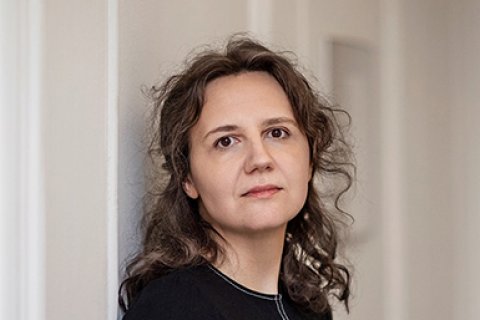The Myth of the Great Artist
Art historian Eva-Maria Troelenberg on the art documentary
In the new documentary Christo: Walking on Water, we see the famous artist Christo work on The Floating Piers, a large-scale project on the Italian Lake Iseo. This creates the image of an intractable artist. For the occasion of the release of the documentary, we spoke with Professor Dr Eva-Maria Troelenberg (Art History) about the movie and about the growing popularity of the art documentary in general.
THE ARTIST AS A PROPHET
Why do we like to watch documentaries about artists so much? “Seeing an artist at work gives us the feeling that we share in a secret and see something unique come into being. An idea that's connected to the idealistic concept of art as an individual, authentic creation and the artist as kind of a prophet. In Christo: Walking on Water, this can also be seen in the subtitle Walking on Water, according to Troelenberg. “But”, she says, “we mustn't forget that looking at the life and work of an artist through an analytical lens in art history has already been around since Vasari wrote his Vite in 1568 [editor's note: Vasari’s Vite is one of the most famous early art-historic texts, containing biographies of famous Italian artists].
This canonising of artists - though often the established, commercially successful male names - now just manifests in another medium: the artist documentary
ELEVATED ABOVE EVERYDAY LIFE
In the documentary, we see Christo lash out at members of his team and at employees of the municipality when many of his ideas turn out to be practically infeasible due to safety regulations. “What's made clear in this documentary is the idea of Art as a license for an aggressive, stubborn attitude - in which the artist's ideas collide with the practical sides of the real world and reality. This seems to be connected to an idealised image of art, which is perceived as supposed to be independent from or even elevated above everyday life.”

ART DOCUMENTARIES IN MUSEUMS
Is it true that many art documentaries forgo nuance and contribute to this mythologisation? Troelenberg thinks it is not that bad: “That image can come about if you think that people are only interested in the idea of The Great Master. This problematic attitude can sometimes also be seen in museums: the lack of trust that the public can make nuances, let conflicting ideas co-exist and handle difficult subject matter. On the other hand, some of the best documentaries about artists aren't those you see in the cinema, but instead movies that are made for body-of-work exhibits. Those documentaries work so well over there because they have dialogues with the original artworks that can also be seen there.
LAYERED DOCUMENTARY
If carried out well, such original artworks are not overshadowed by a mythologisation of an artist.” It should be said that the documentary on Christo is also one of those more layered documentaries, as “the movie definitely also shows the problematic sides of Christo’s approach. And there is much attention for all the practical work involved in carrying it out, and how many people and interests are involved besides the artist themselves.”
DIALOGUE BETWEEN SCIENCE AND AUDIENCE
Art documentaries offer the possibility for art historians to seek out the dialogue with a bigger audience
Troelenberg also sees the potential that this kind of documentary has: “I also think that documentaries about artists offer possibilities to offer other perspectives on art, complementary to what academic art historians or exhibitions can show. Every art historian has occasionally had the feeling that they read or saw something about art or artists in a popular context and found it to be too simplified or sensation loving. But essentially, art historiography is also a form of telling a story about art. We should therefore be capable of understanding a medium such as the art documentary, and criticise it where necessary. And besides that, a medium such as this also offers us the possibility to seek out the dialogue with a bigger audience.”

ART AS A COLLECTIVE COLLABORATION
When asked the question of what the ideal art documentary would look like to her, Troelenberg replies: “I personally really love documentaries about institutes, such as the documentary that Frederick Wiseman made about the National Gallery in London, or Oeke Hoogendijk's Het Nieuwe Rijksmuseum. Personally, I'd love to see a documentary about the Venice Biennale, seen from the points of view of the people involved: from the famous artists to the baristas, from the office staff to the gardeners of the Giardini. Showing such a collective collaboration also immediately lets us avoid many of the problems described above – AND we show that art is rarely the result of a single person's work.”
EVA-MARIA TROELENBERG

Troelenberg occupies the Chair for Modern and Contemporary Art History at the Department of History and Art History of Utrecht University. On 26 June 2019, she will hold her inaugural lecture as a Faculty Professor of Modern and Contemporary Art. The title of her inaugural lecture is Bridging the Gap, or: how to become a Modernist.

